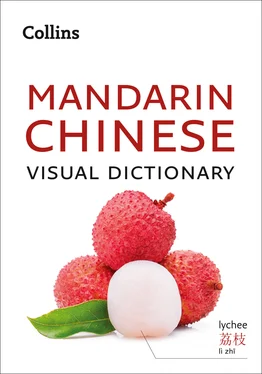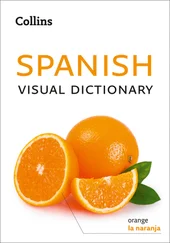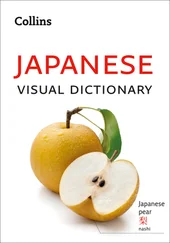
COPYRIGHT COPYRIGHT INTRODUCTION THE ESSENTIALS TRANSPORT IN THE HOME AT THE SHOPS DAY-TO-DAY LEISURE SPORT HEALTH PLANET EARTH CELEBRATIONS AND FESTIVALS ACKNOWLEDGEMENTS PHOTO CREDITS ABOUT THE PUBLISHER
Published by Collins
An imprint of HarperCollins Publishers
Westerhill Road
Bishopbriggs
Glasgow G64 2QT
First Edition 2019
© HarperCollins Publishers 2019
Collins® is a registered trademark of HarperCollins Publishers Limited
Ebook Edition © March 2019
ISBN: 9780008319946
Version: 2019-03-26
All rights reserved under International and Pan-American Copyright Conventions. By payment of the required fees, you have been granted the non-exclusive, non-transferable right to access and read the text of this ebook on screen. No part of this text may be reproduced, transmitted, downloaded, decompiled, reverse engineered, or stored in or introduced into any information storage and retrieval system, in any form or by any means, whether electronic or mechanical, now known or hereafter invented, without the express written permission of HarperCollins.
Entered words that we have reason to believe constitute trademarks have been designated as such. However, neither the presence nor absence of such designation should be regarded as affecting the legal status of any trademark.
HarperCollins does not warrant that any website mentioned in this title will be provided uninterrupted, than any website will be error free, that defects will be corrected, or that the website or the server that makes it available are free of viruses or bugs. For full terms and conditions please refer to the site terms provided on the website.
If you would like to comment on any aspect of this book, please contact us at the given address or online.
E-mail dictionaries@harpercollins.co.uk
 www.facebook.com/collinsdictionary
www.facebook.com/collinsdictionary
 @collinsdict
@collinsdict
COVER
TITLE PAGE
COPYRIGHT
INTRODUCTION
THE ESSENTIALS
TRANSPORT
IN THE HOME
AT THE SHOPS
DAY-TO-DAY
LEISURE
SPORT
HEALTH
PLANET EARTH
CELEBRATIONS AND FESTIVALS
ACKNOWLEDGEMENTS
PHOTO CREDITS
ABOUT THE PUBLISHER
Whether you’re on holiday or staying for a slightly longer period of time, your Collins Visual Dictionaryis designed to help you find exactly what you need, when you need it. With over a thousand clear and helpful images, you can quickly locate the vocabulary you are looking for.
The Visual Dictionary includes:
10 chapters arranged thematically, so that you can easily find what you need to suit the situation
images – illustrating essential items
YOU MIGHT SAY… – common phrases that you might want to use
YOU MIGHT HEAR… – common phrases that you might come across
VOCABULARY – common words that you might need
YOU SHOULD KNOW… – tips about local customs or etiquette
USING YOUR COLLINS VISUAL DICTIONARY
The points set out below will help to make sure that your Collins Visual Dictionarygives you as much help as possible when using Mandarin Chinese:
1) How to address people politely
At work, you can call your peers by their names – a rule of thumb is to always address people by their job title or occupation with their family name first, for example, 张老师 (zhāng lǎo shī), “Zhang teacher”. You may also hear 小王 (xiǎo Wang), literally “young Wang” or 老李 (lǎo Lǐ), “old Li” in the workplace depending on age and seniority, although this is rather informal.
When invited to meet a friend’s family, unless they are younger or roughly the same age, you shouldn’t call them by their names. You can call their grandparents 爷爷/奶奶 (yé ye/nǎi nai) “grandfather/grandmother”, and their parents or anyone in that generation 叔叔/阿姨 (shū shu/ā yí) “uncle/auntie”, as if they were your own relatives. Addressing the older generations by their names is considered very rude in Chinese culture.
“你” or “您”? Although both are translated as “you” in English, 您 is used to show respect when addressing, for example, your parents, grandparents, or boss. On the other hand, 你 is used to address friends and peers.
2) Measure words
Measure words are unique to Chinese, and are mandatory when using a noun with a numeral, for example, “one car” is 一辆车 (yī liàng chē) and “three bedrooms” is 三间卧室 (sān jiān wò shì). In these cases, the measure words are 辆 (liàng) and 间 (jiān) respectively. There are many different measure words in Chinese, and they are used for different types of objects. The most common measure word is 个 (gè) and this can be treated as a “default option” when you don’t know the exact measure word to use.
3) Tones for一 and不
To maintain consistency, we use yī (first tone) as the Pinyin for the character 一 and bù (fourth tone) for the character 不. This is in line with the authoritative Contemporary Chinese Dictionary. However, the pronunciations for these two characters may vary according to the tones of the characters that proceed or follow them, as shown below:
| 一 |
TONE |
EXAMPLES |
| When it’s the last character of a phrase or sentence |
First tone |
第一 (dì yī) first统一 (tǒng yī) unity |
| When followed by characters of the first, second, and third tones |
Fourth tone |
一天 (yì tiān) one day一起 (yì qǐ) together |
| When followed by characters of the fourth tone |
Second tone |
一夜 (yí yè) one night一切 (yí qiè) all |
| 不 |
TONE |
EXAMPLES |
| When it’s the last character of a phrase or sentence |
Fourth tone |
绝不 (jué bù) never也不 (yě bù) nor |
| When followed by characters of the first, second, and third tones |
Fourth tone |
不行 (bù xíng) no不好 (bù hǎo) bad |
| When followed by characters of the fourth tone |
Second tone |
不错 (bú cuò) good不去 (bú qù) not going to |
FREE AUDIO
We have created a free audio resource to help you learn and practise the Chinese words for all of the images shown in this dictionary. The Chinese words in each chapter are spoken by native speakers, giving you the opportunity to listen to each word twice and repeat it yourself. Download the audio from the website below to learn all of the vocabulary you need for communicating in Chinese.
www.collinsdictionary.com/resources
Конец ознакомительного фрагмента.
Читать дальше


 www.facebook.com/collinsdictionary
www.facebook.com/collinsdictionary @collinsdict
@collinsdict










